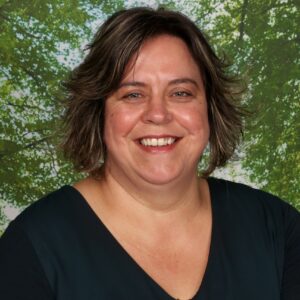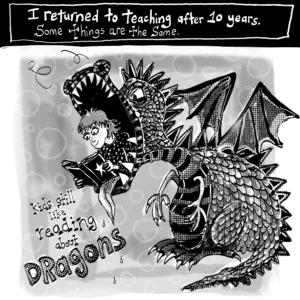



As a middle or senior leader, your work is never done. There is always something more that you wish you could give your time to. Across the roles I have held as a Deputy Principal, team leader, curriculum leader and Kāhui Ako within-school teacher, I have frequently questioned whether I’m spending my time on the ‘right’ things to enable me to make a positive difference to the teachers I am meant to be supporting. We also all have different skills that don’t flow as naturally or things that we don’t focus on so instinctively, and so to develop as leaders we need ways to reflect and check in on our evolving practice.
In the past two years, through completing my Master of Educational Leadership at the University of Waikato and subsequently transitioning into my first Deputy Principal appointment, I have discovered that as Aotearoa New Zealand teachers and leaders, we are sitting on an underutilised gold mine of a tool than can help us do exactly this: reflect across the full spectrum of aspects of effective educational leadership. I’m referring to the Teaching Council’s Educational Leadership Capability Framework, released in 2018. This framework encompasses all areas of educational leadership (see box), spelling out why each of its nine capabilities are important, what they might look like in practice across a range of contexts, and how the capabilities align with the Tū Rangatira vision of Māori-medium educational leadership.
| The nine Educational Leadership Capabilities (Teaching Council, 2018): 1. Building and sustaining high trust relationships 2. Ensuring culturally responsive practice and understanding of Aotearoa New Zealand’s cultural heritage, using Te Tiriti O Waitangi as the foundation 3. Building and sustaining collective leadership and professional community 4. Strategically thinking and planning 5. Evaluating practices in relation to outcomes 6. Adept management of resources to achieve vision and goals 7. Attending to your learning and wellbeing as a leader 8. Embodying the organisation’s values, and showing moral purpose, optimism, agency, and resilience 9. Contributing to the development and wellbeing of education beyond their organisation |
Exploring my leadership practice through the Capability Framework
I first used the Framework within my master’s research to explore the effectiveness of my one-to-one coaching practice as a middle leader in a primary school. I wanted to undertake research that would have a direct impact on my leadership style and skills, so I asked: ‘How effective is my coaching practice?’, ‘What were the impacts of the coaching intervention?’, and ‘How did my coaching reflect the Framework?’.
I went through the data systematically to consider what evidence there might be that reflected each of the nine capabilities. The Framework explains each capability in three different spheres: leading organisations, leading teams, and being an expert teacher. The last of these spheres was the best fit for the 1:1 coaching intervention, so I used this sphere as my success criteria for each capability. This process highlighted some positive aspects of my leadership style and coaching practice that seemed to come relatively naturally for me and that I can be deliberate about maintaining, but also other aspects that contribute to effective leadership that I needed to work on strengthening. An example of this is the final capability, which calls on all of us as leaders to share knowledge and build connections beyond our immediate context, to support broader gains for more and more of Aotearoa New Zealand’s learners. I hadn’t previously thought about this being my responsibility as a middle leader, assuming that it was more a principal’s role, and have been challenged to look for ways that I can contribute in wider settings.
Extending the use of the Framework across a leadership team
I completed my master’s and moved into my current Deputy Principal role at the start of 2023, but I didn’t want to leave the Capability Framework behind. I shared with my new senior leadership colleagues the ways I had used this resource to systematically reflect on my leadership practice, and with their support I am now adapting the Framework to be used within my school. I have been asked to make teacher coaching a big focus of my current role, and regularly returning to the Framework descriptors for the ‘expert teacher’ sphere gives me a way to keep checking in on my practice. In addition, our roles as senior leaders go beyond 1:1 work with teachers, and so I am beginning to evaluate my leadership practice using the descriptors from the ‘leading teams’ sphere in the Framework. Finally, we as a whole leadership team can use the ‘leading organisations’ sphere descriptors to reflect on the big picture of our collective practice as we lead the school together. Across all these spheres, our conversations and reflection around the Framework challenge us to move from nice ideals or theoretical principles and to actually develop our practice and impact within our school.
As I spread my wings and grow my leadership across these three spheres, I know that I will continue to develop as a leader. I encourage other leaders and aspiring leaders to be brave in picking up this document and using it to guide courageous conversations about leadership practice. Together, our ongoing shared learning will support the learning and flourishing of learners across Aotearoa.
Whāia te mātauranga hei oranga mō koutou: Seek after learning for the sake of your community’s wellbeing.
Tania Yorke is a teaching deputy principal in a year 3/4 class at Kaharoa School in Rotorua. Her Master of Educational Leadership focused on coaching as a middle leader in a primary school. She is interested in effective quality leadership in primary schools. If you would like to read Tania’s dissertation, you may contact her at tania@kaharoa.school.nz.
Related Posts

After a decade away from the whiteboard, educator and comic artist Indira Neville has returned to teaching – and she’s drawing about it. In this comic series, Indira shares a glimpse into her days at school, capturing what’s changed, what’s stayed the same and what she never saw coming.

The key obligation for governments is to resource the early childhood care and education sector in order to provide high quality, culturally sustaining provision, since research has reinforced that this serves both individual and societal long-term wellbeing. So why are they not doing this?

While headlines continue to debate the state of education, and political conversations turn increasingly towards blame and constraint, the reality is that our teachers are holding together a system under pressure with the strength of their care, professionalism and deep commitment to every child who walks through the door.

It’s often said that a nation’s budget reflects its values. If that’s true, then Budget 2025 tells us undeniably that children, especially our youngest tamariki, are not a priority.